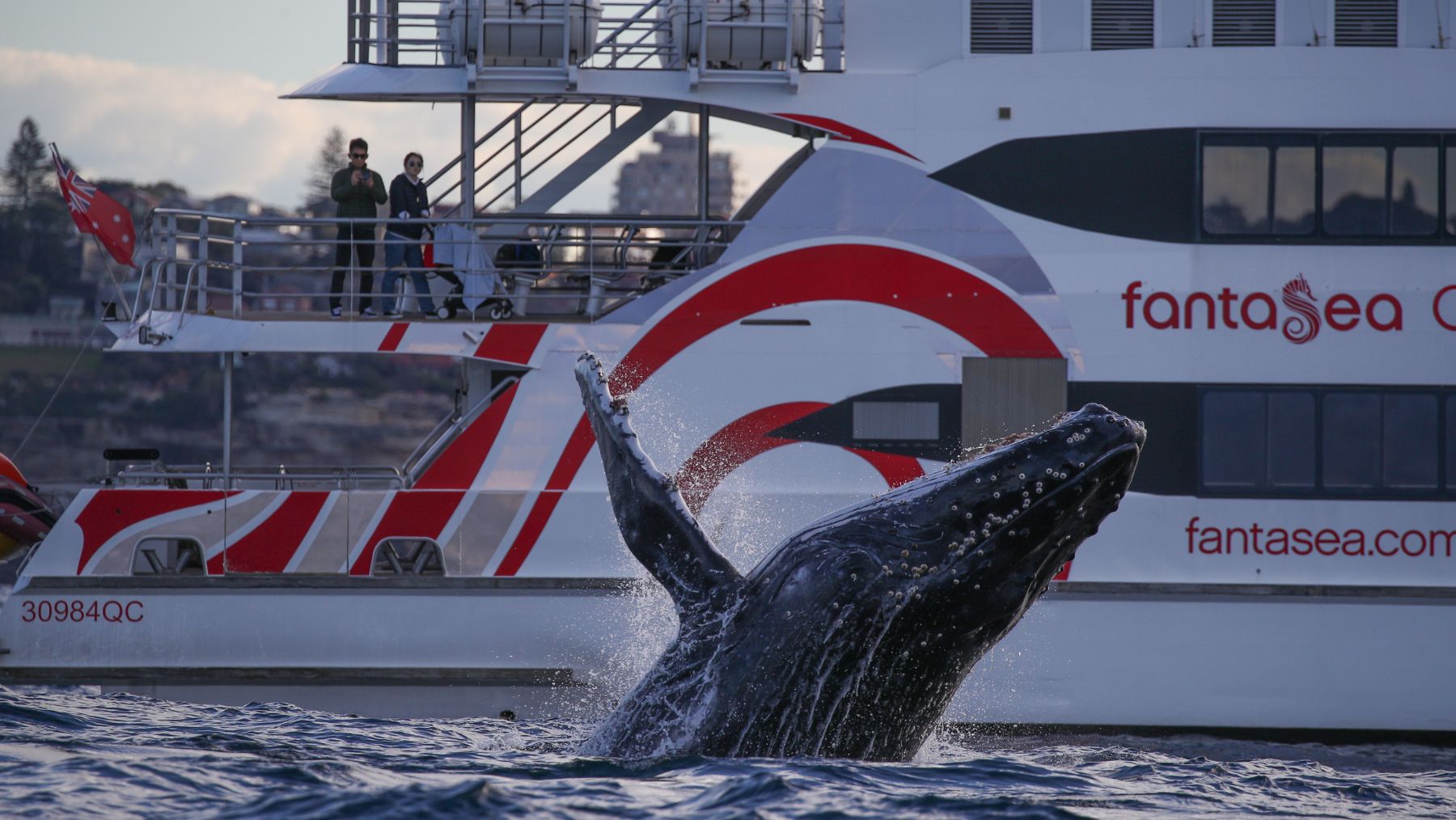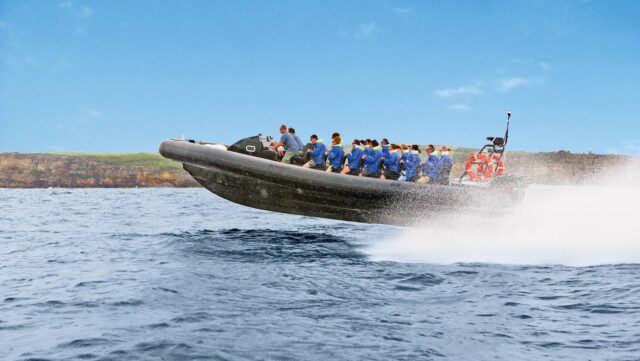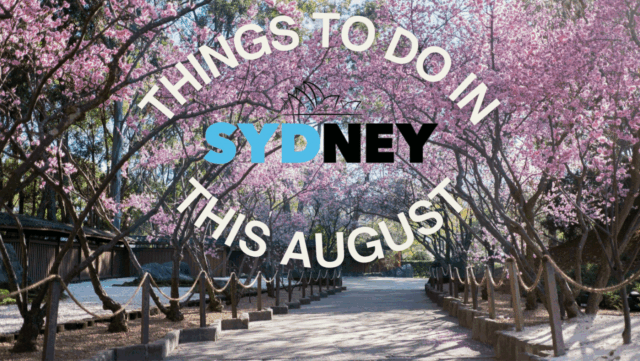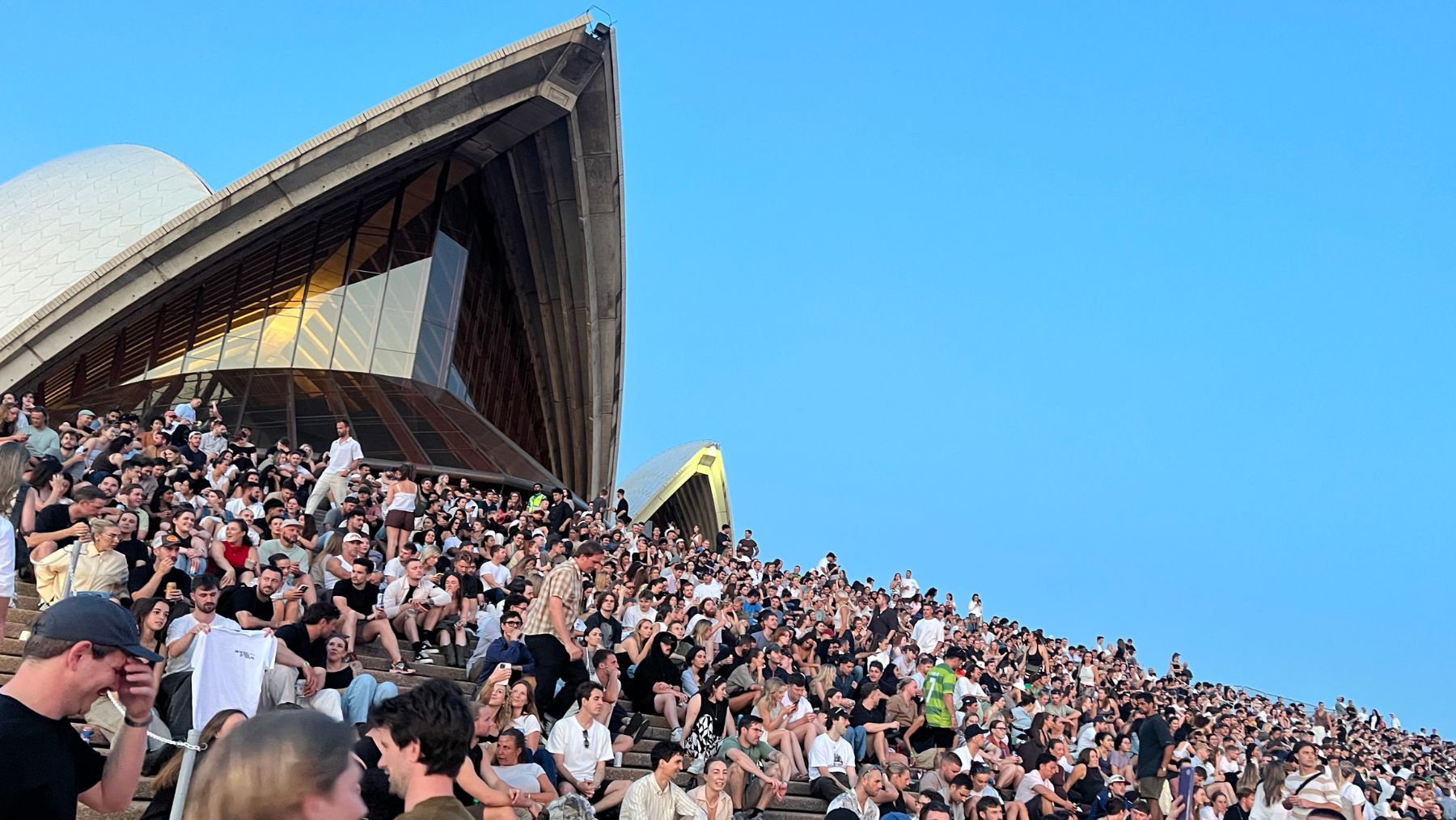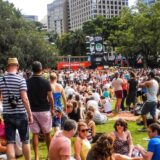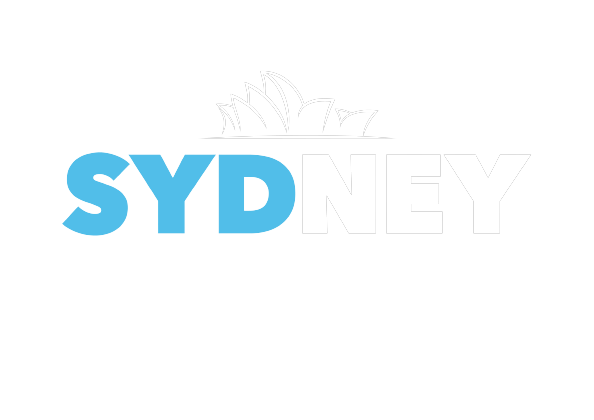Whale watching season is officially underway, and these are the best tours and viewing spots for whale watching in Sydney — including exclusive discount codes to save on your whale watching tour.
Get your winter woolies on and head out to see one of nature’s greatest events: the humpback whale migration. From May to July, around 40,000 whales swim north from Antarctica to the warmer waters of Queensland. Come August, they return south, travelling past New South Wales once more, with newborns in tow, offering a second chance at a sighting. Whale watching season is one of the many highlights of winter in the Harbour City.
Whether you stick to solid ground to spot some spouting from coastal walks, or cruise out to the open ocean on a tour, these are the best places for whale watching in Sydney.
Best whale watching tours in Sydney
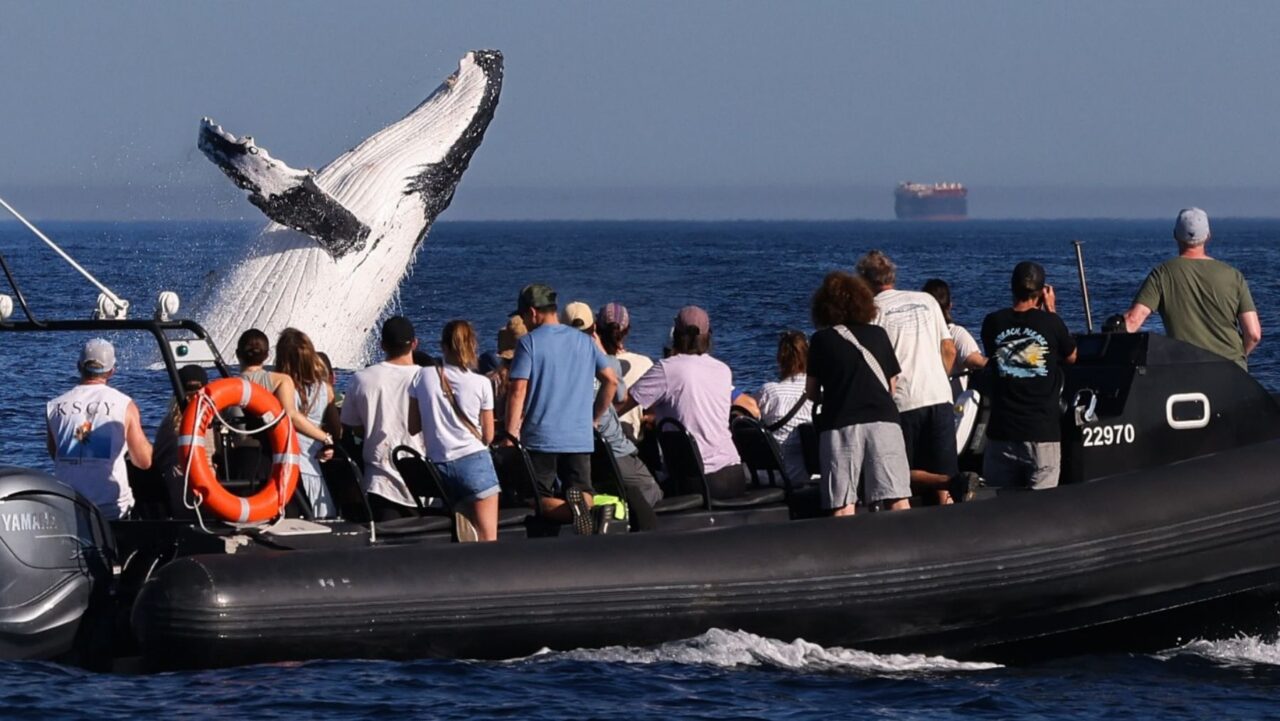
1. Captain Cook Cruises
The Captain Cook Cruises fleet has been sailing across Sydney Harbour for 55 years. They’re experts by now, so you’re in good hands. The 2.5-hour cruises depart from Circular Quay daily at 9:30am and 1:30pm, sailing past the Harbour Bridge and the Opera House before heading out to the open ocean (from $69 per adult). They offer a Whale Sighting Guarantee, so you can cruise again for free if you don’t spot the giants. Combine your cruise with a visit to Taronga Zoo for the ultimate family day out ($129 per adult), or make sightseeing even easier with the Whale Explorer ticket, which includes a two-day hop-on hop-off pass ($119 per adult).
For Sydney Travel Guide readers, use the code 23UG25A when booking to save up to 15% on your Captain Cook Cruises trip.
Book your cruise at captaincook.com.au
2. Fantasea
There are three different cruises to choose from at Fantasea, whose crew have more than 25 years’ experience. All cruises are led by an expert crew and on-board guides who share insights and facts about the migrating whales.
- Two-hour express cruise: the most popular option for those looking for a time-efficient journey. Departing from Circular Quay, you’ll reach open ocean in just 15 minutes aboard Ocean Dreaming II, which has three viewing decks and indoor and outdoor seating. From $85 per person.
- 2.5-hour discovery cruise: Departing from Darling Harbour, you’ll reach the open ocean in 25 minutes on Fantasea Avalon. The vessel has a seated sun deck, a covered rear deck, a climate-controlled cabin and refreshments available to buy at the licensed bar. From $85 per person.
- 2.5-hour adventure cruise: This high-speed experience is for thrill-seekers. The nimble Totally Wild vessel only seats 27 passengers and has powerful engines, a rigid hull and high-back seats to provide speed as well as safety and comfort. You’ll travel at top speed to the open ocean. From $99 per person.
Use the code STG15 when booking to save 15%.
Book your cruise at fantasea.com.au.
3. Go Whale Watching
Simon and Jessica Millar have been operating whale watching tours from Sydney and the South Coast of NSW since 2004. The three-hour cruise (adult $85, child $65) is one of the longest you’ll find in Sydney, giving you plenty of time to see breaching whales, dolphins and seals. The custom-designed catamarans have 360-degree viewing decks to ensure the best views, and all tickets purchased directly from Go Whale Watching Sydney come with a whale sighting guarantee — if you don’t see whales on your tour, you can cruise again for free.
Use the code SYDNEYTRAVEL for 25% off your whale watching cruise.
Book your cruise at gowhalewatchingsydney.com.au.
4. Ocean Extreme
Sailing on the fastest commercial vessels in Sydney, Ocean Extreme provides some of the most intimate whale watching cruises available in the city. Tours cost $139 per person, making them one of the most expensive available, but if it’s good enough for Will Smith, Geri Halliwell and even Prince William, it’s good enough for us. Their boats are small but mighty, getting you out to the whales as fast as possible. Boats are open and low to the water, offering unobstructed and up-close views, but perhaps not as comfortable as some of the previously mentioned options. Ocean Extreme also operates a whale sighting guarantee, with a free second trip if you don’t see whales on your first journey.
Book with them at oceanextreme.com.au.
5. Oz Whale Watching
Have a hot brekkie or BBQ lunch with the whales on board the Oz Whale Watching cruise experience. The four-hour trips include either a hot breakfast served on board as you coast out to Sydney Heads, or a buffet lunch. Breakfast tours run on Saturdays and Sundays only at 8:15am–12:15pm, while lunchtime tours are available daily (12:15pm–4:15pm). Private tours are also available for a more intimate experience.
Book at sydneyprincesscruises.com.au
Popular viewing spots
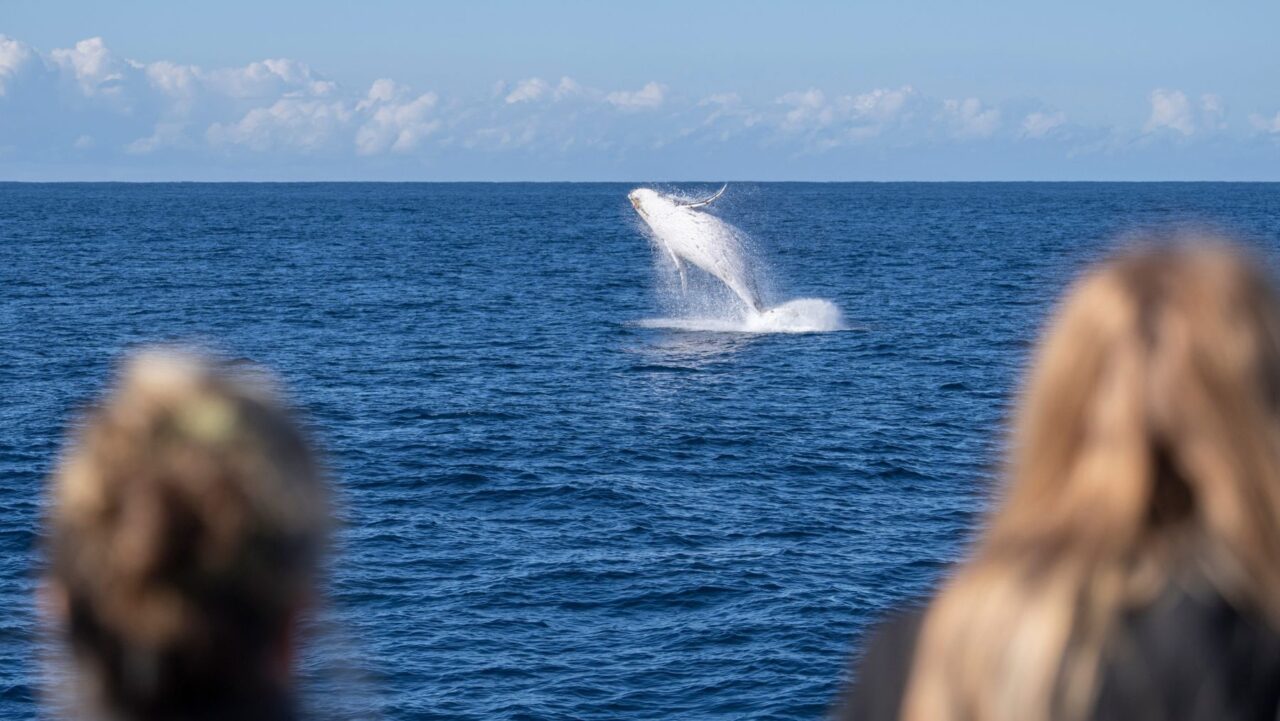
1. Cape Solander
Cape Solander, near Cronulla, is a well-known whale-watching hotspot with a dedicated viewing platform and informative signage. From late May through July, it’s common to see multiple whales a day. The local volunteer-run whale counting station is a bonus for curious onlookers wanting insights on migration patterns.
How to get there: Take the T4 from Central Station to Cronulla and then hop on the 987 bus to Cape Solander.
2. Barrenjoey Headland, Palm Beach
For the adventurous, hike up to Barrenjoey Lighthouse for panoramic views of the ocean. The 1km climb is worth every step, especially during peak season when sightings are almost guaranteed. Early mornings here are serene, and the sight of a breaching humpback silhouetted against the sunrise is unforgettable.
How to get there: Take the B-Line bus to Narrabeen B-Line, where you should then transfer to the 199 bus which will take you directly to Palm Beach (90–120 minutes). Short on time but have the budget? Splash out on a sea plane journey from Rose Bay, which slices your journey time down to just 20 minutes. Alternatively, drive and make a trip of it by booking somewhere to stay.
3. North Head
A little southeast of Manly, North Head offers sweeping views over the Pacific Ocean. This elevated vantage point makes it one of the best places to spot whales breaching or blowing in the distance as they pass Sydney. Plus, you might even see dolphins tagging along. The Fairfax Walk is a short, family-friendly circuit that leads you straight to prime viewing platforms.
How to get there: By car, drive to North Head Scenic Drive, off Darley Road in Manly; it’ll take around 30 minutes from the city. The best (and most scenic) option however would be to catch the ferry from Circular Quay wharf to Manly Wharf. From there, take the 135 bus to North Head Q Station.
READ MORE: The ultimate guide to Manly
4. Bondi Beach
Sydney’s most iconic beach isn’t just for surfers and sunbathers. The famous Bondi to Coogee coastal walk gets even better with an appearance from passing whales. There are numerous vantage points along the cliffs. Ben Buckler Point, on the northern end of Bondi, is a particularly good spot—grab a coffee from Pocket, take a stroll up the hill and keep your eyes on the sea.
How to get there: The 333 bus route is the most popular but can get busy. You can also take the 379 from Bondi Junction Station and alight at Glenayr Avenue. The 380 also operates along the beachfront.
5. Dover Heights
The coastal path at Dover Heights recently reopened after an upgrade, so it’s worth checking out anyway. The high cliffs and unobstructed views make it a bit of a hidden gem for spotting whales though. Rodney Reserve, in particular, has sweeping ocean views without the crowds. It’s also a great place to bring a picnic blanket and make a morning of it.
How to get there: Take the 323 bus from Edgecliff Station or the 380 bus from North Bondi or Watsons Bay.
6. Watsons Bay & South Head
Watsons Bay is already a weekend favourite for Sydneysiders, and during winter, it doubles as a fantastic whale-watching location. The Gap lookout provides dramatic cliffside views where you might catch humpbacks breaching just offshore. Afterwards, grab some fish and chips or take a seat at Watsons Bay Hotel and soak in the scenery — whether or not the whales make an appearance.
How to get there: Catch the hourly ferry from Wharf 2 at Circular Quay, Wharf 2 to Watsons Bay Wharf hourly. Tickets cost $6–8 and the journey takes 23 min. Captain Cook Cruises also services this route hourly. Alternatively, hop on a bus: routes 325, 324 and 380 operate in the area.
There’s something awe-inspiring about seeing a 30-tonne creature launch itself from the water, and in Sydney, you don’t need to go far to witness it. Whether you’re a seasoned spotter or a curious first-timer, the humpback highway is open and the show is free.
Ready to catch a glimpse of these majestic creatures? Which spot will you try first?
FAQs
When is the best time to go whale watching in Sydney?
You can successfully spot whales passing Sydney from May through to November. First, humpback whales migrate north to give birth in Queensland’s warmer waters. Then they travel back south later in the year, with their calves in tow. Mid-June to mid-July is considered the peak time though, when the highest number of whales has been reported. Late mornings and early afternoons are the best time to see whales as they are often most active at this time. Heading out between 11am to 3pm gives yourself the best chance to spot them.
What types of whales can I see in Sydney?
Humpback whales are the most common, with an estimated 45,000 of them migrating past the Harbour City each year. There have also been sightings of southern right whales, sperm whales and even orcas in Sydney’s waters as well though.
Can I see whales from the shore in Sydney?
Absolutely — Sydney is famed for its beautiful coastal walks, and they gain an extra selling point through winter. A walk up to Barrenjoey Lighthouse is recommended anyway, for the panoramic ocean views it offers, and a wander from Manly down to North Head Lookout is also a fantastic way to explore more of the Northern Beaches. Coogee, Bondi Beach and the Dover Heights to Hornby Lighthouse walk are great options in the Eastern Suburbs. Read our full guide above for even more land-based locations for a spot of whale watching.
How long do whale watching tours typically last?
An average whale watching tour can last anywhere between two to three hours. That allows enough time to travel out of the Harbour to the open ocean and back again.
What should I bring for a whale watching trip?
Warm layers (even if it’s sunny), sunglasses, a camera and a sense of adventure. Those are the basics, but check weather conditions or what your tour operator suggests before travelling.
Are there any age restrictions for whale watching tours?
Some age restrictions can apply depending on the operator and vessel, but check with your operator of choice. Ocean Extreme, for example, offers tours for ages six and above or 12+ on their vessels. Captain Cook Cruises, meanwhile, welcomes children of all ages as long as they are supervised by an adult.
{ “@context”: “https://schema.org”, “@type”: “FAQPage”, “mainEntity”: [{ “@type”: “Question”, “name”: “When is the best time to go whale watching in Sydney?”, “acceptedAnswer”: { “@type”: “Answer”, “text”: “You can successfully spot whales passing Sydney from May through to November. First, humpback whales migrate north to give birth in Queensland’s warmer waters. Then they travel back south later in the year, with their calves in tow. Mid-June to mid-July is considered the peak time though, when the highest number of whales has been reported. Late mornings and early afternoons are the best time to see whales as they are often most active at this time. Heading out between 11am to 3pm gives yourself the best chance to spot them.” } },{ “@type”: “Question”, “name”: “What types of whales can I see in Sydney?”, “acceptedAnswer”: { “@type”: “Answer”, “text”: “Humpback whales are the most common, with an estimated 45,000 of them migrating past the Harbour City each year. There have also been sightings of southern right whales, sperm whales and even orcas in Sydney’s waters as well though.” } },{ “@type”: “Question”, “name”: “Can I see whales from the shore in Sydney?”, “acceptedAnswer”: { “@type”: “Answer”, “text”: “Absolutely — Sydney is famed for its beautiful coastal walks, and they gain an extra selling point through winter. A walk up to Barrenjoey Lighthouse is recommended anyway, for the panoramic ocean views it offers, and a wander from Manly down to North Head Lookout is also a fantastic way to explore more of the Northern Beaches. Coogee, Bondi Beach and the Dover Heights to Hornby Lighthouse walk are great options in the Eastern Suburbs. Read our full guide above for even more land-based locations for a spot of whale watching.” } },{ “@type”: “Question”, “name”: “How long do whale watching tours typically last?”, “acceptedAnswer”: { “@type”: “Answer”, “text”: “An average whale watching tour can last anywhere between two to three hours. That allows enough time to travel out of the Harbour to the open ocean and back again.” } },{ “@type”: “Question”, “name”: “What should I bring for a whale watching trip?”, “acceptedAnswer”: { “@type”: “Answer”, “text”: “Warm layers (even if it’s sunny), sunglasses, a camera and a sense of adventure. Those are the basics, but check weather conditions or what your tour operator suggests before travelling.” } },{ “@type”: “Question”, “name”: “Are there any age restrictions for whale watching tours?”, “acceptedAnswer”: { “@type”: “Answer”, “text”: “Some age restrictions can apply depending on the operator and vessel, but check with your operator of choice. Ocean Extreme, for example, offers tours for ages six and above or 12+ on their vessels. Captain Cook Cruises, meanwhile, welcomes children of all ages as long as they are supervised by an adult.” } }] }
